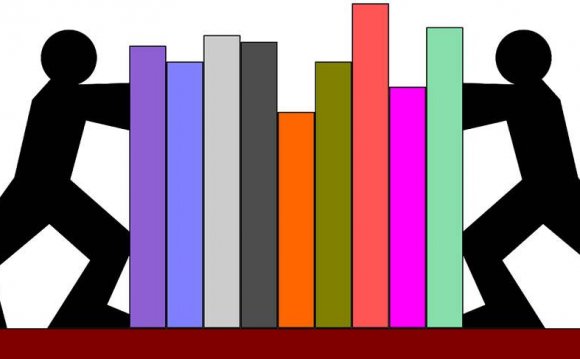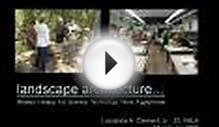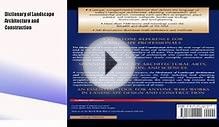
![]() 9. Landscape Architectural Graphic Standards – Leonard J. Hopper
9. Landscape Architectural Graphic Standards – Leonard J. Hopper
Representing the job in excess of 100 authors it is really an essential accessory for the library. The simple-to-navigate text provides precision at the tips of the fingers, by having an enormous selection of clearly detailed construction diagrams and industry-wide standards for every type of site elements. A less pricey, slimmed-lower version can also be available, including access fully selection of information online.
8. Landscaping: A Cultural and Architectural History – by Elizabeth Barlow Rogers
An encyclopedic account of synthetic landscapes around the world, this book supplies a comprehensive source of historic landscaping. Superb illustrations and photographs do ample justice towards the text. Suggested to anybody with an intention in visual arts or landscape architecture, and also to designers who would like to obtain a historic perspective within their area.
7. Digital Drawing for Landscape Architecture: Contemporary Techniques and Tools for Digital Representation in Site Design – Bradley Cantrell and Wes Michaels
A scanned, contemporary form of a magazine for example Reid’s Landscape Graphics, Digital Drawing for Landscape Architecture bridges analogue and digital representation techniques. Each chapter and section demonstrates different techniques, by using Illustrator to produce sections and plan graphics, to scaling and dealing with aerials. A great source of anybody attempting to improve his software and rendering abilities.
6. The Planting Design Guide- by Nick Robinson
A no-nonsense method of planting design techniques, Nick Robinson’s text is targeted in a wide audience of planting and environment designers. Design from the book is spacious and consists of sketch illustrations having elegant clearness, detailing the gardening, environmental, and aesthetic qualities of plants. Any garden designer or landscape architect would take advantage of this book.
5. The Dying and Existence of effective American Cites – by Jane Jacobs
An extensive manual of urban planning, Jane Jacob’s sixties documentation of intricacies and foibles of metropolitan areas has gotten an incredibly wide audience. Fascinatingly, Jacobs didn't have professional urban planning education. She rather depended exclusively on her behalf findings and customary sense to describe how certain places really work, instead of the way they should function based on modern city planning.
4. The Social Existence of Small Urban Spaces – William H. Whyte
A eighties classic. The legendary urbanist and professional people-watcher William Whyte – together with his research team “The Street Existence Project" – carried out studies of recent York’s plazas, parks, and concrete spaces so that they can document the dynamic human interactions that inhabit them. It makes sense an informative text on why is a great city, having a wonderful (and rather humorous) companion film.
3. Concepts of Environmental Landscaping – Travis Beck
Travis Beck’s book addresses the ever-present interest in the look and control over ecologically sustainable landscapes. Applying real-world cases, it covers subjects for example biogeography and plant selection, competition and coexistence, and plant-animal interactions, to title however a couple of. Fond of professionals and students alike, this bit of literature continues to be named an important twenty-first century tool.
2. Landscape Graphics – Grant Reid
A vintage industry reference, this can be a must-have for college students a new comer to landscape architecture. The domination of CAD-based drawing has overshadowed the significance of understanding the basic principles of hands-made illustrations. It covers all of the necessities of drawing, in the fundamentals of drafting, freehand drawing, and conceptual diagramming, to perspectives, section elevations, and much more.
1. Design With Character – Ian L. McHarg
Considered probably the most influential book on landscape planning ever written, the 1969 text by Scottish landscape architect Ian McHarg developed the idea of environmental planning and just how to create harmoniously using the natural atmosphere. Inspiring visitors to check out their very own atmosphere in new ways, Design With Character continues to be probably the most broadly read landscape architecture book from the twentieth century.
The standard book lover might be a dying breed, but there’s without doubt that subjecting yourself to some diverse selection of books and absorbing their information with understanding is definitely an infallible method to become an expert on the subject. The richness reading through provides is unequalled I really hope these 10 books offer exactly that.
Still cant’s make your choice things to get, take a look at our
Article by Paul McAtomney
Featured image: License: CC0 Public Domain, source.
Paul McAtomney comes from Australia and it has an assorted selection of interests, leading him to create about a number of subjects all of which are underlined by his consistent enthusiasm for design and learning, composing articles that does not only reveal in regards to a subject but explore them as well.
RELATED VIDEO
![The Fundamentals of Landscape Architecture [PDF] Full Ebook](/img/video/the_fundamentals_of_landscape_architecture_pdf.jpg)










